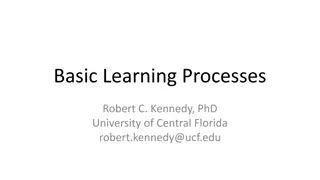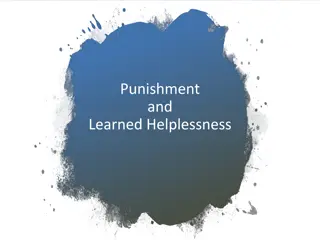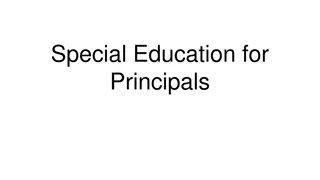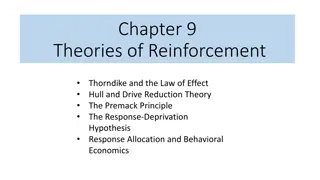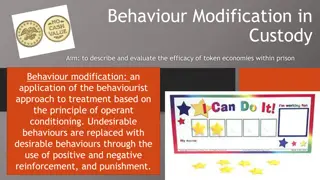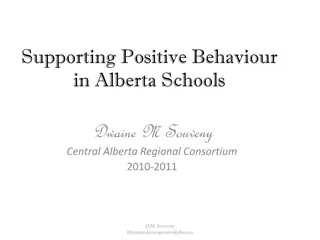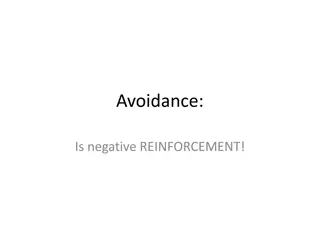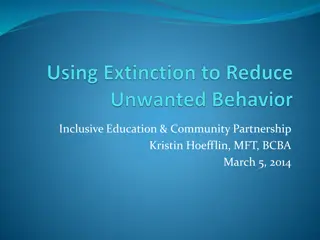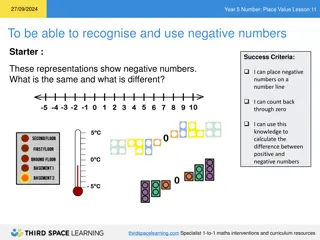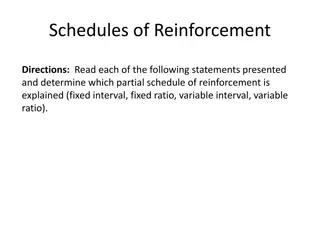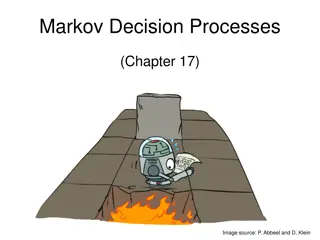Understanding Positive and Negative Reinforcement in Special Education
Positive reinforcement involves rewarding good behavior in children, such as praise or rewards, while negative reinforcement motivates change by removing something unpleasant. Positive reinforcement is usually more effective and includes examples like praising a child for putting away dishes or rewarding a teenager for studying hard. On the other hand, negative reinforcement examples include a child avoiding chores to escape nagging or a teenager stopping complaints to avoid loud music. Both types of reinforcement play a crucial role in shaping behaviors in special education settings.
- Positive Reinforcement
- Negative Reinforcement
- Special Education
- Behavior Modification
- Effective Teaching
Download Presentation

Please find below an Image/Link to download the presentation.
The content on the website is provided AS IS for your information and personal use only. It may not be sold, licensed, or shared on other websites without obtaining consent from the author. Download presentation by click this link. If you encounter any issues during the download, it is possible that the publisher has removed the file from their server.
E N D
Presentation Transcript
Reinforcement TEXTS IN SPECIAL EDUCATION
Positive Reinforcement Positive reinforcement refers to giving a child something reinforces good behavior. Discipline that relies mostly on positive reinforcement is usually very effective. Examples of positive reinforcement include praise, a reward system, or a token economy system
Specific examples ofpositive reinforcementinclude: A child puts his dishes in the sink when he s done eating and his mother says, Great job putting your dish awaybeforeIevenaskedyouto! A child earns time to play his video games for completing his homeworkwithout arguing. A teenager who studied hard all semester receives anAonhis reportcard
Negative Reinforcement Negative reinforcement is when a child is motivated to change his behavior because it will take away something unpleasant. A child who stops a behavior because his parent yells at him is trying to get rid of the negative reinforcer(the yelling). Negative reinforcement should be used sparingly with kids as it is less likely to be as effective as positive reinforcement.
Specific examples ofnegative reinforcementinclude: Amother nagsher sonto do his chores every night so one night he decides to do his chores right when he gets homefromschoolto avoid hearinghernag. A child has been getting into arguments with peers at the bus stop so his mother decides to go to the bus stop with him every day. He begins behaving at the bus stop so his motherwon twait forthe buswith him. A teenager complains about not wanting to go to school the entire ride to school every morning. His father turns on talk radio loudly to drown him out. The next day the teenager stopscomplaining sohis father won tturnontalk radio




